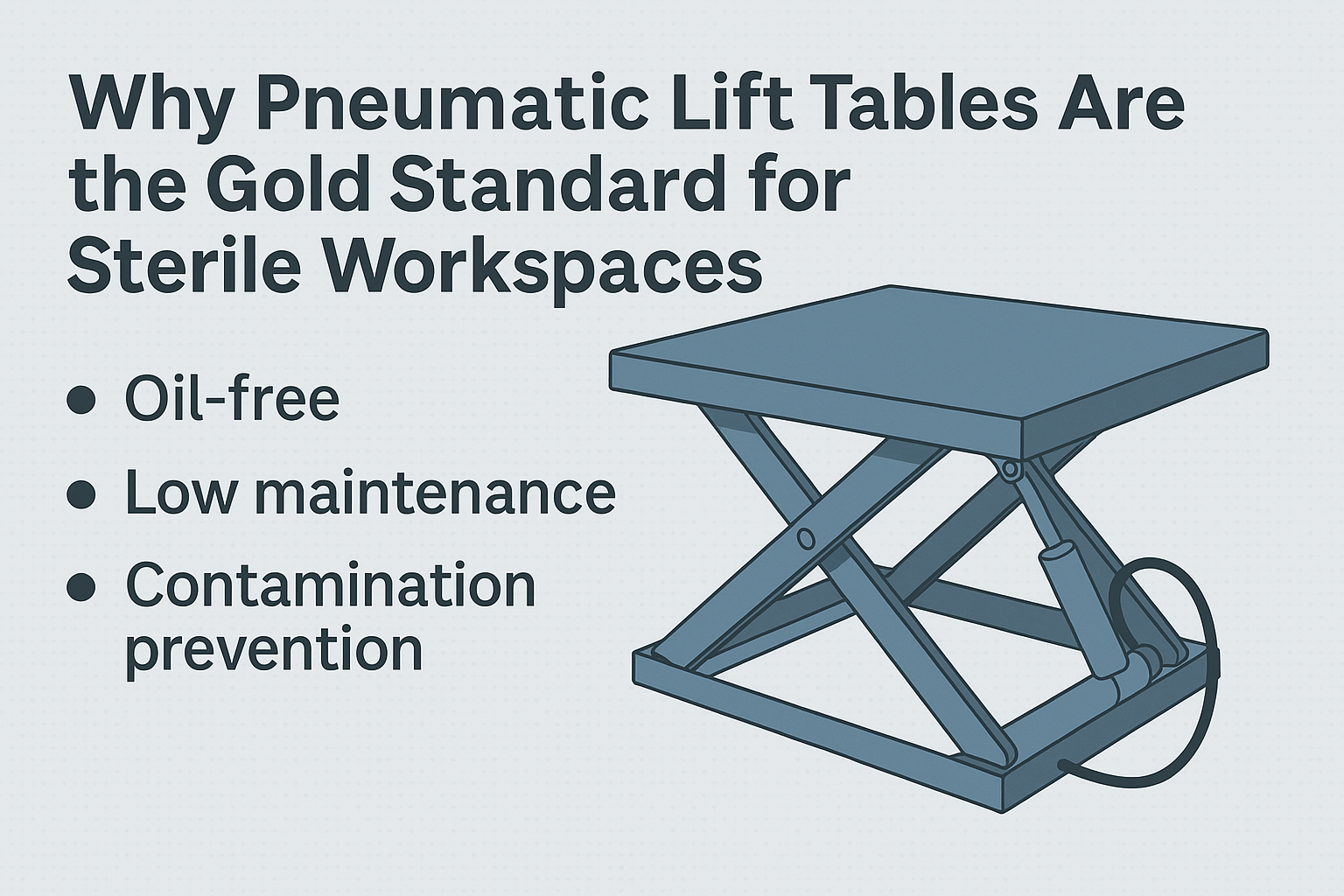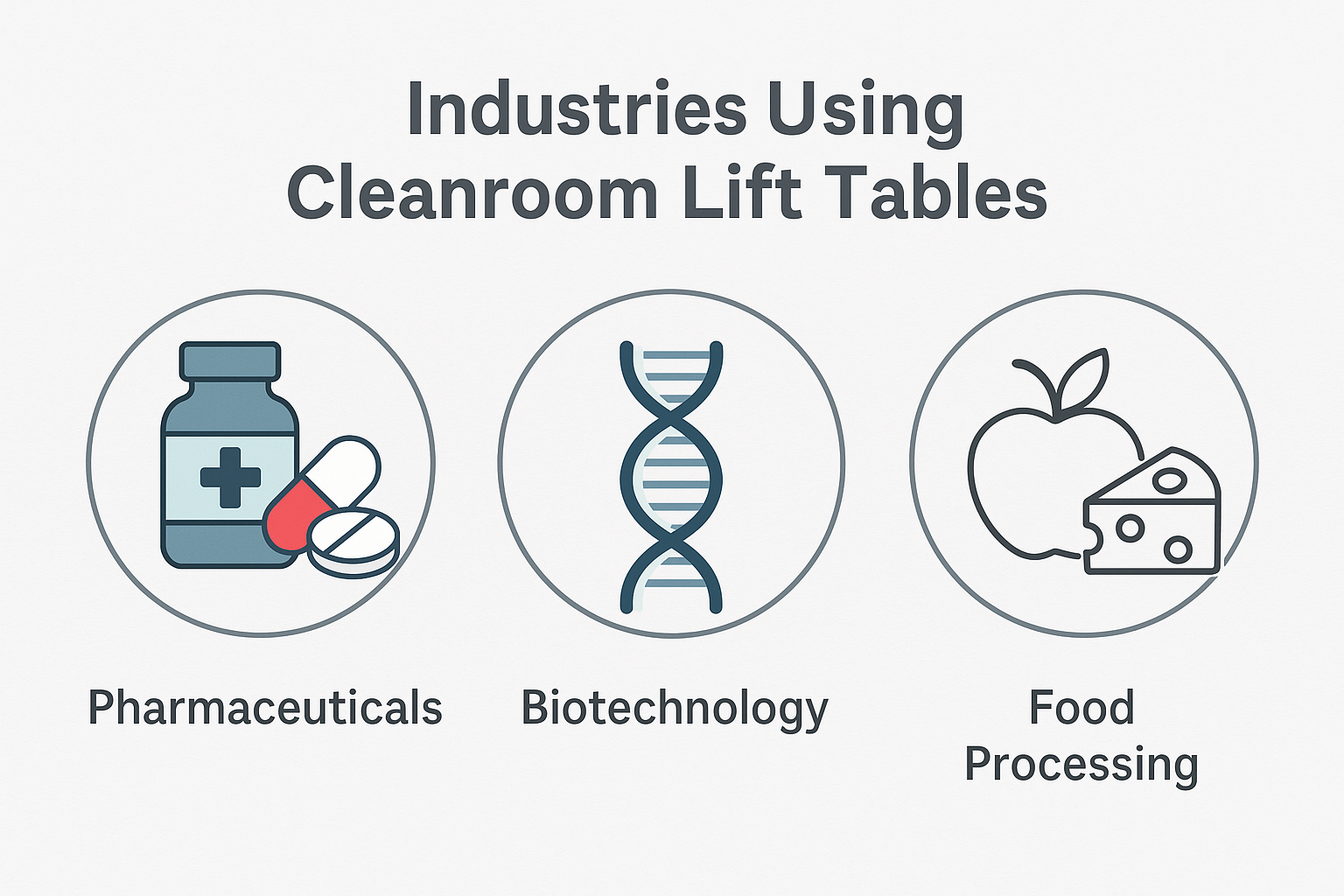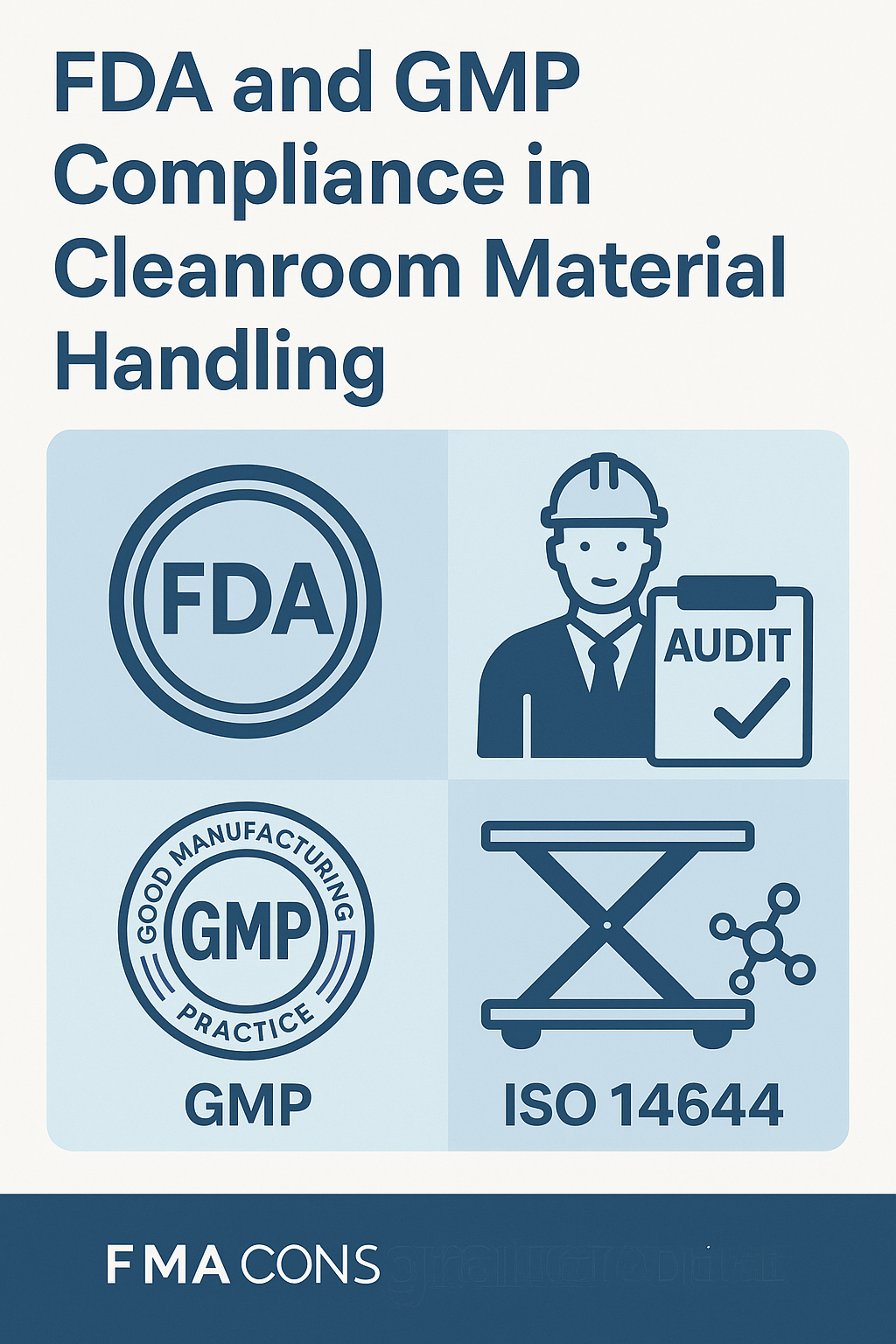
Why Pneumatic Lift Tables Are the Gold Standard for Sterile Workspaces
Explore why pneumatic lift tables outperform hydraulic and electric options in sterile environments. Clean, safe,
When it comes to manufacturing in cleanroom environments, the phrase “compliance is everything” couldn’t be more accurate. Whether you’re in pharmaceuticals, food production, or high-tech assembly, your equipment must meet stringent FDA and Good Manufacturing Practice (GMP) standards. A cleanroom lift table is no exception.
But how do you know if a lift table is truly compliant—or just marketed as such? In this post, we’ll break down the key regulatory standards, the design features required for compliance, and how to avoid costly missteps when purchasing lift equipment for sterile zones.
FDA compliance ensures that your equipment doesn’t contaminate the product or interfere with its quality. This includes materials used, how the equipment is cleaned, and how it interacts with other systems.
GMP compliance ensures that manufacturing processes are consistent and controlled, including the layout and maintenance of the equipment used. Together, these regulations aim to minimize risks involved in production that cannot be eliminated through testing the final product.
Material matters. Look for 304L or 316L stainless steel. These alloys resist corrosion, tolerate aggressive cleaning agents, and have smooth surfaces that won’t harbor bacteria or particulates.
Crevices and gaps are breeding grounds for contamination. Lift tables should have fully welded seams and smooth joints, ideally polished to reduce roughness that can trap debris.
Pneumatic lift tables are preferred in environments where hydraulic fluids pose a contamination risk. If electric or hydraulic systems are used, they must be enclosed and easily sanitized.
Tables should withstand routine sanitation protocols without degradation. This includes tolerance to steam, chemical disinfectants, and pressurized water.
Compliance also includes safety. Cleanroom lift tables should feature toe guards, non-slip platforms, safety locks, and emergency stops—especially in pharmaceutical and biotech settings.
Ensure that your equipment supplier provides validation packages, material certifications, and operating manuals in line with compliance audits. Equipment should come with proper labeling, traceability markings, and documentation of cleaning protocols.
In one pharmaceutical facility, the use of an outdated lift table led to an FDA citation due to exposed hydraulic lines leaking fluid. After switching to pneumatic stainless steel models, the company passed its next inspection with zero citations.
GMP auditors look not only at cleanliness but also how easy it is to maintain hygiene over time. Investing in compliant equipment reduces the long-term cost of audits, recalls, and production halts.
Regulatory compliance doesn’t happen by accident. Choosing the right cleanroom lift table involves careful attention to materials, construction, safety, and documentation. By investing in equipment that meets or exceeds FDA and GMP standards, your facility gains both peace of mind and operational efficiency.
🔗 Ready to upgrade your material handling process? Explore FDA- and GMP-compliant lift tables here.

Explore why pneumatic lift tables outperform hydraulic and electric options in sterile environments. Clean, safe,

From pharma to semiconductors, see how top industries use cleanroom lift tables to maintain compliance,

Understand what makes a lift table truly FDA and GMP compliant. Explore the must-have features,
Copyright 2025 All Rights Reserved – Industrial Man Lifts